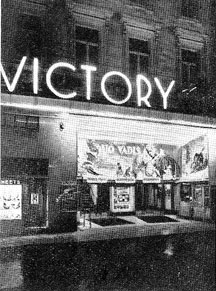
Tamil Cinema 1950 1970 Movie Manthiri Kumari
Tamil films of 1957.This page provides Septemdetailed Tamil panchangam for Redmond, Washington, United States. In the fourth essay of ‘100 Bollywood movies to watch in your lifetime’ series, we present 10 parallel cinema classics.A listing of lists of films produced in Tamil language film industry in India in the 1950s by year of release: Tamil films of 1950. Tamil Movie Manthiri Kumari Year 1950 Tamil Movie Mappillai (1989) Tamil Movie. Tamil Movie Kan Malar Year 1970 Tamil Movie Kanavae Kalayade Year 1999 Tamil Movie Kanchi Thalaivan Year 1963 Tamil Movie Kandan Karunai (1967). Tamil Movie Avargal Year 1977 Tamil Moive Chinna Vaadhyaar Tamil Movie Kudiyiruntha Koyil (1968).
A patron saint of the New Wave before succumbing to the charms of commercial Bollywood, Shah has famously dismissed many of the arthouse staples as fraudulent. Forget the audience, even those who have helped build this “serious cinema” brand, one of them being Naseeruddin Shah of Nishant, Sparsh and Albert Pinto Ko Gussa Kyun Ata Hai, today believes many of these classics suck. Do these titanic names draw a blank in the minds of the average viewer? The answer, we are afraid, is a vehement ‘Yes.’ The parallel, or art cinema, that came riding on the wave of Satyajit Ray, Ritwik Ghatak and Mrinal Sen all the way from Bengal to Bollywood in the 1970-80s, is nobody’s favourite genre. Tamil films of 1946.Shyam Benegal. A listing of lists of films produced in the Tamil language film industry in India in the 1940s by year of release. It also lists daily timing and position of Sunrise, Sunset, Moonrise, Moonset, Nakshatram, Yoga, Karna, Sunsign, Moonsign, Rahu Kalam, Gulikai Kalam, Yamaganda, Abhijit, Dur Muhurtham, Amrit Kalam, Varjyam, Tamil Yoga.
I would rather be a trashy low-art guy than try and suggest that I am some sort of Brahmin filmmaker, rooted in ancient Hindu aesthetics.”Horror is not a new category in India but still we have very few horror films, there were many horror films in the 80s but all are like b grade horror movies the same thing happened with Tamil Cinema. I am not from the Mani Kaul school, which is going back to a celebration of pre-colonial culture. “It imposes a certain type of film and tends to create its own closed market. “The principle of the art-house circuit is reactionary,” Ahluwalia told Projectorhead, spelling out his distaste. And if it’s really a question of issues, then even Manmohan Desai made films about the injustices against the working class.” Ashim Ahluwalia, of Daddy fame, has also scoffed at art cinema. They were making the same film again and again.



As Satish Kaushik said, “If actors like Nawazuddin Siddiqui are big stars today, it is thanks to Om Puri, who convinced audiences to look beyond an actor’s face.” In later years, Om Puri along with longtime colleagues Shabana Azmi, Smita Patil and Naseeruddin Shah would switch to popular cinema, a move many critics have dismissed, perhaps unfairly, as “defection.” The art cinema-Bollywood have had a love-hate, but at times, the twain met in unexpected ways. If there was no Om Puri, they would be no Irrfan Khan, Nawazuddin Siddiqui and Manoj Bajpayee. This is not to say that the male actors from parallel cinema were any less canonical. Yet, the image of Azmi and Patil, screen foes but also friends and mutual admirers, as feisty rural women, nautch girls and social workers of arthouse – who can forget Sonbai’s (Patil) eye-blinding revenge in Ketan Mehta’s Mirch Masala (1987) – continues to rival their Bollywood heritage of “Aaj rapat jaaye” and con-girl Shabbo acts. But such was their appeal that the audience embraced them in melodramatic song-and-dance routine, too. The irony is that today’s viewers may know Azmi and Patil more for their occasional leaps into the mainstream space.
Tamil Cinema 1950 1970 For Free In These
“I would think that the filmmakers’ concerns today are different and the city doesn’t find any place in their agenda. The gritty side of ‘Bombay’ played a key role in the parallel cinema classics, a legacy that lives on through Anurag Kashyap and others. And then, there was the rigorously Marxist Saeed Mirza. Shantaram, the Mani Kaul school believed in the Bresson style emphasising temporal over visual. If Benegal and his protégé Nihalani were drawn to Satyajit Ray and V. The penny-wise NFDC was a major player, unflinchingly supporting the parallel cinema even though the directors and actors often complained of literally acting for free in these films!It must be noted that within parallel cinema there existed a sharp ideological divide.
How will he ever stand out from this dime-a-dozen everydayness, a kind of obscurity that’s impossible for minions like him to overcome? There’s ‘bounce’ in his walk and Salim thinks that’s his distinguishing feature. In the opening scene, narrator and leading man Salim (Malhotra) tells us that there are many Salims in this city. Filmed on the mean streets of Bombay, the movie starring Pavan Malhotra as the title character envelops us in the world of a man without a purpose, following the call of the low-life. (Express archive photo)The social dilemma, contradictions, flaws and frailties within the Indian Muslim after Babri demolition and the Bombay riots are laid bare in Saeed Mirza’s Salim Langde Pe Mat Ro. Salim Langde Pe Mat Ro (1989)‘Mushkil toh sharafat aur izzat ki zindagi jeene mein hai’ – Aslam Pavan Malhotra and Neelima Azim in Salim Langde Pe Mat Ro. I would like to believe every now and then a filmmaker inspired by some aspect of the city, malls and all, will come up with his unique response to it,” Nihalani said in 2008.As part of our ‘100 Bollywood movies to watch in your lifetime’, here’s a compilation of 10 parallel cinema essentials that should put a few things into perspective.
Seen afresh, Salim Langde Pe Mat Ro raises more questions than it answers. Salim’s own identity crisis, ethnicity, minority status and his place in the world are issues key to not just this one character in a poor working-class neighbourhood but to thousands of Indian Muslims grappling with those very questions even today. Aslam’s idealism reminds Salim of his deceased brother, an ideal Muslim who worked hard to forge his own identity. Aslam is everything Salim is not – educated, progressive and one who does not hide under the safety of his religion. Mirza sharply contrasts Salim and his ilk that firmly believes in the thug life as an idea of social justice to the idealistic Aslam (Rajendra Gupta).
It’s difficult to sell the plot of Om-Dar-Ba-Dar to someone who hasn’t seen it. Clearly, the nonlinear Om-Dar-Ba-Dar was not made to fit into the conventional idea of cinema. Director Swaroop’s famous comment (who was inspired by the Dada movement) that “We will return your money if you understand the film” has further muddled the viewers. Many still find it as utterly abstract and inscrutable as ever. Today, the 1988 coming-of-age tale is being frequently discussed outside the film circle. It has been variously described by fanboys as ‘avant-garde’, ‘surrealistic’, ‘absurdist’, ‘ahead of its time’ and ‘postmodernist.’ There was a time when Om-Dar-Ba-Dar was an FTII cult, seen and understood only by the so-called cineastes.
A mixture of myth and magic, Om-Dar-Ba-Dar features some of the most interesting ideas you will see in a Hindi film. It’s a strange family and a strange town (some say it’s based on Swaroop’s growing-up memories in Ajmer and Pushkar) and stranger things happen to them.


 0 kommentar(er)
0 kommentar(er)
